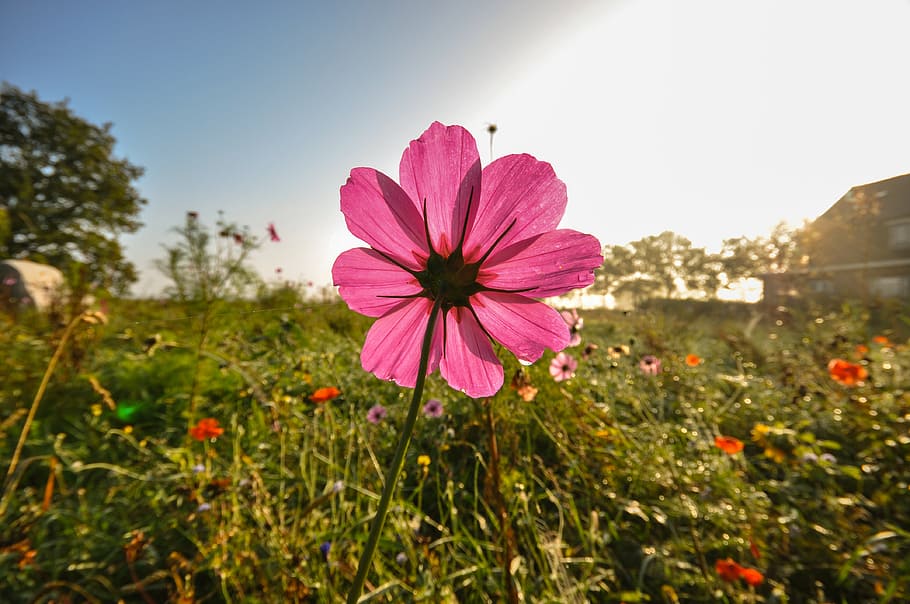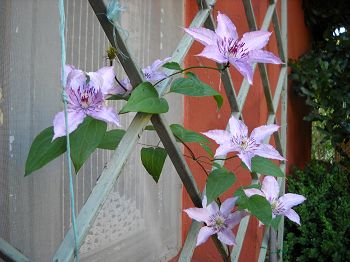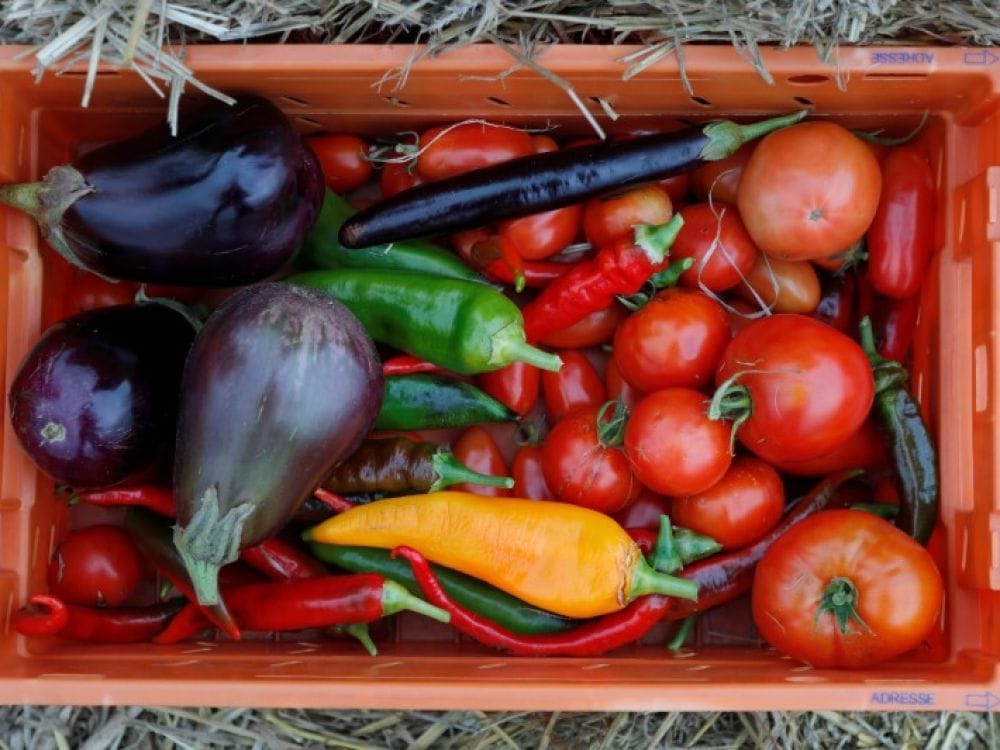With Gill Storey
This year has been once again breaking the rules and it has been hard to keep up with the changes in our garden.

Weeds have taken over, the heat making them take over any bare ground.
The crops had been coming on well but the heat wave made the beans and peas shrivel up and the yields have been very small. The leeks have bolted and the onions are already ripe for harvesting while the main-crop potatoes are still very tiny. But the parsnips are in good form, and we can look forward to a good crop for Christmas.
The pond has recovered from its battle with blanket weed and the lilies are flowering steadily as summer progresses. The filter pump now runs during the afternoon heures creuses (economy period) and the water is staying clear.
Planning planting for next year and choosing perennials which will do well in the heat is beginning to loom large.
Perennials are ideal for hot weather gardening as they send down deep roots and make the most of any moisture you put in the soil and it has been proved that hot-weather plants do better with less watering. Perennial flowers and shrubs have the advantage of filling up your beds reliably but you do have to remember what you have planted where.
I planted a new Albertine rose almost on top of a very vigorous pink dahlia and it is feeling the competition until autumn, when the dahlia will be lifted, divided and replanted.
The first step is to walk around your neighbourhood and note what does well. The gardens near me have Welsh and Iceland poppies, wisteria, roses – of all types –, canna lilies, oleanders, red-hot pokers (Kniphofias), morning glories (Ipomeas) yucca plants, trumpet vines (Bignonias).
I have yarrows (Achillea), Chinese Lanterns (Physalis alkekengi), and Lamb’s Ears, (Stachys Lantana or S. Byzantina) which the locals call hare’s ears.
Some of these plants may die down in the winter, but will reappear in spring, like dahlias. Some, like periwinkle, are very invasive and will stage a takeover if given a chance.
Clematis also do well, provided you keep their roots cool.
 The silver leaved plants such as lavender, rosemary, cistus, dianthus and eryngium grow in the wild here and will do well in the garden.
The silver leaved plants such as lavender, rosemary, cistus, dianthus and eryngium grow in the wild here and will do well in the garden.
As well there are the water-storing plants such as sedums and echeverria which hold out in the driest weather.
A cactus bed is fun to plan and there is a splendid example on the new roundabout in Claira nearest to Decathlon.
The garden centres will have many flowers which tend towards the exotic, but which may well need to be brought in or sheltered in the winter months – citrus trees, dipladenia, kalanchoe, Christmas cactus and trilliums.
The main tasks in the garden are:
Flower Garden
1. Continue deadheading. A plant’s main ambition is to produce seeds, and if you frustrate this it will go on flowering for much longer.
2. Tidy up your rambling roses. Take out one in three of the stems. Summer prune your rose bushes – take off the dead heads with secateurs and let the plants develop new flower buds.
3. Take leaf cuttings (put in a pot with rooting compound) of your pelargoniums, osteospermum, aubrietia, dianthus .
4. Finish dividing your iris.
5. Collect seeds as they ripen – or take off the flower heads and shake over the beds if you want a pleasant jumble of flowers
6. Continue the war against aphids. Using a hose helps and cochenilles (scale insects) on shrubs can also be hosed off without expensive preparations.
7. Continue to prune wisteria taking it back to 5 buds
8. Cut back your lavender after flowering and hang up surplus flowers in a cool dry place to collect the seeds in an old pillowcase
9. Don’t worry if your lawn is brown: it will recover. Get some robust grass seed to sow in bare patches later on.
10. Water your pots and keep feeding them

Vegetable Garden
1. Sow oriental vegetables, cabbage and turnips for autumn and winter crops – the cooler moist weather forecast for this week should help.
2. Prune out wood that has fruited on your plums and cherries.
3. Take cutting of woody herbs like rosemary and set them with rooting powder. Always keep a few little rosemary plants on the go as they can die suddenly – and the spares make useful presents.
4. Keep your tomatoes well watered.
5. Lift your second early potatoes.
6. Keep picking the soft fruit. The raspberries will continue till autumn.
7. Summer prune apples, pears and plums
8. Sow green manures on empty patches of ground to dig in later.
END NOTE
Take note of the plants which have not done well and those which have flourished and plan accordingly. The great joy at this time is unlimited tomatoes and lots of soft fruit. Cucumbers, peppers and marrows are becoming abundant, and preserving time approaches. Every day the taste of fresh-picked food comes into our kitchen..
© Gill Storey


Hi, thanks for the tips. I am new to gardening in the south of France and I am finding it a challenge. I live in the Var Region and don’t appear to get the watering right. Too much’ too little and the challenges go on.
I planted a globe cactus and over the last six months it has continued to shrink. Do I remove it from the pot and plant in the ground? Any advice would be greatly appreciated.
Hi Gill – very helpful notes. Thanks – Jane in La Rochefoucauld.